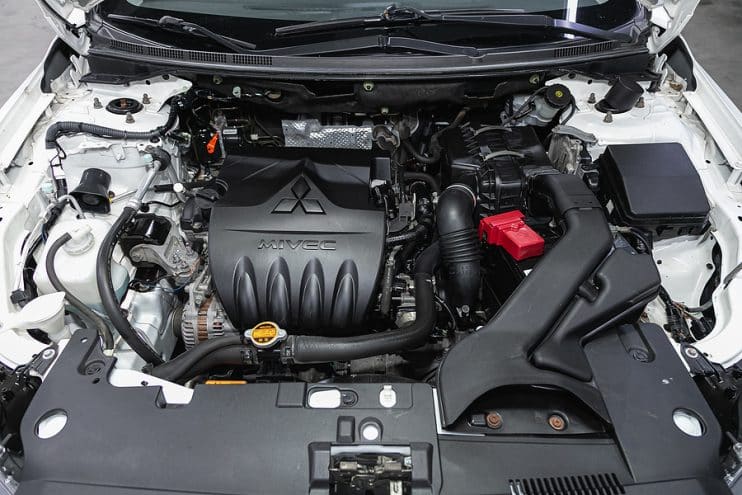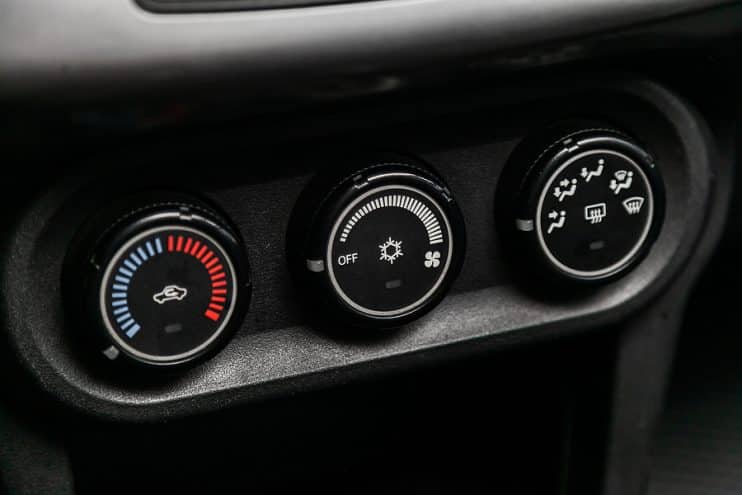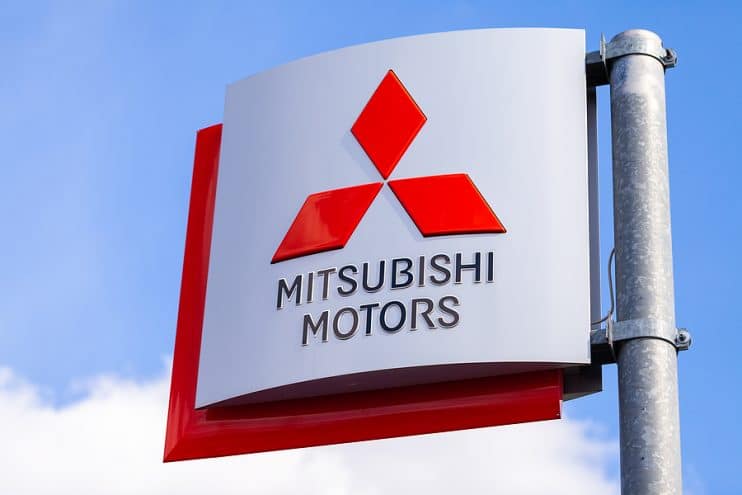
If you’re on the lookout for a dependable compact car with a sporty reputation, the Mitsubishi Lancer might already be on your shortlist. Whether you’re after a practical daily runaround or a more exciting drive in a Ralliart or Evolution model, the Lancer offers plenty of options.
If you’re buying used, you’ll want to go in with your eyes open. Even a Lancer that has been well-loved and well-maintained can develop issues over time. Knowing what to look out for could save you from bigger headaches (and bills) down the line. Fortunately, new and used Mitsubishi Lancer parts are relatively easy to source, so most problems are easily fixed if caught early.
In this blog, we’ll examine some of the most common issues to watch out for and what to do about them. Plus, we’ll give you an idea of the maintenance costs and how reliable the Lancer is.
Table of contents:
- A brief history of the Mitsubishi Lancer
- So what are the common issues with the Mitsubishi Lancer?
- What to consider when buying a Mitsubishi Lancer
A brief history of the Mitsubishi Lancer
The Lancer first appeared in the early 1970s as a small family car, subsequently evolving over the next few decades into a sportier version. By the 1990s, the Lancer Evolution, or “Evo”, had become a rally hero thanks to a turbocharged engine and all-wheel drive setup.
Throughout its lifespan, the Lancer was available in several trims – from a saloon and hatchback to a sporty GT, as well as the performance-focused Ralliart and Evo. It managed to build a reputation for simple mechanics, reliability, and sharp handling. That’s why it remains a firm favourite among car enthusiasts. They love its straightforward engineering, which is easy to maintain, the solid chassis that provides excellent handling, and many agree that running costs are affordable and parts are readily available.
Like any car, though, Lancers can suffer from wear-related problems, especially with their suspension, electrics, and transmission. We’ll review some of the most common issues and let you know what you can do about them.

So what are the common issues with the Mitsubishi Lancer?
Mechanical problems
Like many older Mitsubishis, the Lancer’s mechanicals are generally pretty resilient – but time, mileage, and a lack of good or regular maintenance can cause problems. The good news is that most issues are easy to spot early and can be fixed with new or used Mitsubishi Lancer parts.
1. Engine stalling
Older Lancers are prone to stalling at idle or when slowing down. The usual suspects are a faulty MAP sensor or a clogged throttle body, both of which disrupt the fuel-air mix.
Fix: Clean the throttle body and check for vacuum leaks. If the problem persists, replace the MAP sensor as it’s cheap and easy to fit with basic tools.
2. Brake problems
Uneven braking, early pad wear or a soft pedal are typical signs of sticking callipers or a faulty brake booster valve.
Fix: Inspect pads, rotors and callipers regularly. Replace worn parts in pairs for balanced braking. If the pedal feels spongy, fit a new brake booster valve – it’s an inexpensive part and easy to swap out.
3. Steering pull
If your car drifts to one side, it’s usually down to wheel misalignment or worn suspension bushes, not the steering rack.
Fix: Get a four-wheel alignment and inspect the control arms and bushes. Replacing components on both sides improves tyre wear and stability.
4. Suspension knocks
Creaks or clunks from the front end often come from worn struts or rubber bushings, especially on cars with over 70,000 miles.
Fix: Check struts, top mounts and control arm bushes for cracks. Replacing worn parts as a set keeps handling even and tight.
5. Automatic gearbox issues
CVT-equipped models (2008–2016) can suffer from slipping gears or delayed shifts. Often the transmission control module (TCM) or old CVT fluid is to blame.
Fix: If you see a ‘Check engine’ or ‘Slow down’ message, get the TCM updated. Always use the correct fluid and change it on schedule. Severe cases may need a replacement gearbox.
6. Oil leaks
Leaks tend to appear around the oil cooler hose or towing hook area, often due to the wrong hose being fitted.
Fix: Replace it with the correct hose and tighten all seals. Also, check the oil sump plug and rocker cover gasket while you’re under there.

Electrical problems
Electrical gremlins in a Lancer are usually the result of ageing and simple wear and tear. They’re rarely serious, but they can be annoying.
7. Air conditioning failure
Warm air or weak airflow usually points to low refrigerant, a tired blower motor, or a faulty resistor.
Fix: Recharge the system first. If airflow is still weak, replace the resistor pack or blower motor using new or used Mitsubishi Lancer parts.
8. Electrical glitches
Dim headlights, sticking windows or lazy central locking often come from corroded connectors or ageing relays.
Fix: Clean connectors with contact cleaner and check the fuses. A quick diagnostic scan can reveal hidden faults, and software updates can fix many minor bugs.
9. Check engine light
A persistent warning light is often linked to a bad MAP sensor, TCM overheating, or failing O2 sensors.
Fix: Scan for fault codes straight away. Replacing a sensor early is cheaper than risking gearbox or engine damage. If the fault lies in the TCM, a software update often sorts it.
Interior and exterior problems
Again, ageing Lancers can show signs of wear and tear, even with Mitsubishi’s build quality. Thankfully, most can be easily resolved yourself or by purchasing replacement components.
10. Rust
Rust isn’t unusual on older Lancers, especially around the subframe, wheel arches and underside. Early signs might include bubbling paint or flaking metal.
Fix: You can treat light rust by sanding it away or using a wire brush, then applying an anit-rust primer followed by touch-up paint. If the corrosion is severe then you may need to replace the area with a new or used panel.
11. Seat wear and tear
Sagging, split, or cracked seats and upholstery can be a problem for older Lancers, particularly those with high mileage.
Fix: If the damage is slight, a deep clean and application of a good leather conditioner can help to improve the appearance and slow down wear and tear. If not, you can buy replacement seats from a breaker.

What to consider when buying a Mitsubishi Lancer
Is the Mitsubishi Lancer reliable?
Overall, yes – the Lancer is viewed by many owners as a dependable and easy-to-maintain car, especially in its non-turbocharged trims. Later models (2010–2016) tend to be the most reliable, with fewer reported electrical and gearbox faults. A Lancer could last you at least 150,000 miles with good maintenance.
How long does a Mitsubishi Lancer engine last?
With proper care, a Lancer engine can even exceed 200,000 miles. The petrol engines use a timing chain, not a belt, meaning there’s no need to schedule a replacement – though the chain tensioner should still be checked for wear if you have an older model.
Common issues affecting reliability stem from oil leaks and sludge build-up caused by poor and infrequent servicing. To maximise your Lancer’s lifespan, stick to a strict oil-change schedule and use quality fluids.
If you’re buying used, listen for ticking or knocking sounds. These can be a sign of timing chain wear or oil starvation. In severe cases, a replacement engine may be necessary, but these are relatively easy to source and install.
Is the Mitsubishi Lancer expensive to maintain?
Not really. The Lancer’s simplicity means most parts are affordable, and many jobs are DIY-friendly. Insurance falls within the mid-to-low bracket, depending on the trim level, and Mitsubishi parts are readily available through breakers and online suppliers.
The most significant potential expense is the automatic gearbox, which can cost more to repair if neglected. Regular fluid changes help prevent this.
Mitsubishi officially discontinued the Lancer in 2017 as sales declined and emissions standards tightened. However, its reputation for reliability and accessible performance continues to keep demand strong in the used market.
Typical replacement part costs according to the RAC include £185 for a clutch assembly. Front brake pads will cost around £35, while an alternator costs around £200. Larger fixes, such as replacing a starter motor or exhaust system, cost around £300 to £450.
If you spot signs of gearbox hesitation, suspension noise, or cooling issues, don’t panic – with new or used Mitsubishi Lancer parts, most repairs are straightforward and inexpensive. Keep up with routine maintenance, and you’ll have a reliable, enjoyable car that’s built to last.

.png)